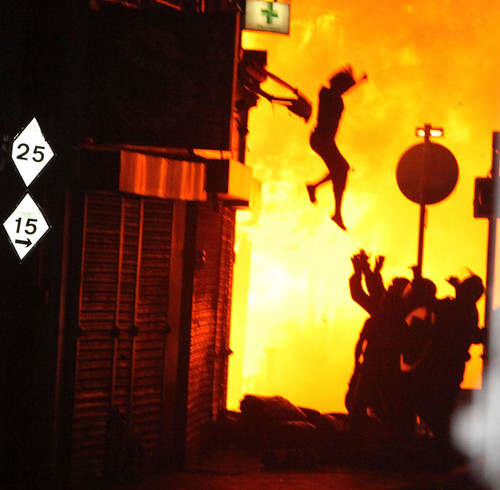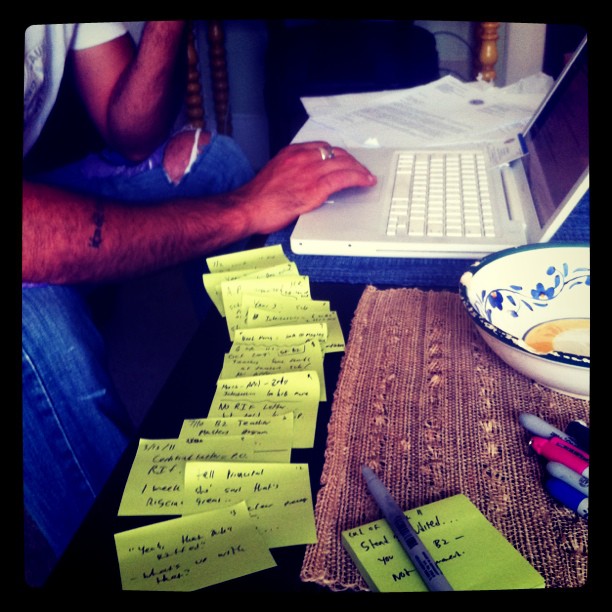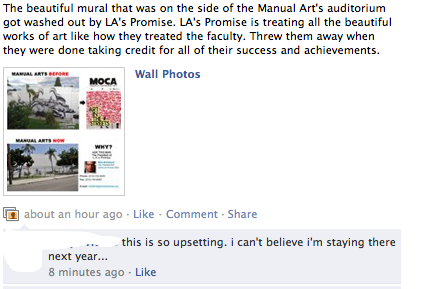Except for my students, I probably learned more from Sadie than anyone else on a daily basis. Sadie was a 10 year old basset hound and she passed away unexpectedly late last month.
She looked like this:

I had clocked it one afternoon in June: it took Sadie and I 52 minutes to go around the block. This isn’t some irregularly long block and it would have been substantially longer if I’d allowed her to indulge in a particularly odoriferous patch of dirt or to continue to bark socially at the black lab up the street. I’ve yet to meet a dog (or a person for that matter) that can be as simultaneously lovable and infuriatingly stubborn as Sadie. And while the seemingly never ending walks have ended, I wanted to share just a few of the many things Sadie taught me about education, the way we learn, and the process of schooling.
First of all, the obvious: like her walking, learning is going to happen at its own pace. It doesn’t matter if the latest episode of the Voice is starting in ten minutes. It doesn’t matter if my slurpee is rapidly melting or if perishable groceries should be stored in the refrigerator. Sadie’s walking cannot be hurried. For her, walking is learning. It reinforces the information that she’d been processing before and offers new knowledge to integrate into her sense of being. Each new scent, each suspicious passerby, each canine (or even better feline or squirrel) is new information and a moment for the world to expand for Sadie. And this, at least as I understand it, is kind of what it’s like in our classrooms. On a good day, we can change the world for students; we can make apparent the magical, undiscovered viewpoints, concepts, literacies and skills that help them unlock new pathways for traversing and understanding the world. And, on a good day, they too can change our lives.
Related to these mediations on walking, Sadie taught me that sometimes learning can’t wait. I’ve been on conference calls with, for example, superiors when I was working with the Department of Education when Sadie would announce with finality that it was time to go out and take what the world has to offer. Her bellowing barks would occasionally elicit laughter from people on these phone calls, if I was speaking or had not muted my phone line, which was embarrassing to say the least. If recent school conflict, in-class tension, or current events are driving the interest and motivation more than my pre-planned lessons, it becomes clear that my students are requiring an imperative shift in instruction for the time being. Like Sadie, student learning needs sometimes present themselves at times when they are unexpected.
Likewise, I’ve left, in the past, social gatherings early and made roundabout detours to others in order to let Sadie out into the world for her walks. Part of teaching is learning to negotiate the demands of an entire learning community.
Sadie’s an adaptive walker. When we first began strolling together, I could gently yank on her leash and she would move according to where I would guide her. However, shortly after Sadie realized that as the alpha individual in our meandering learning space, she would dictate how a lesson would unfold and the time it took to cover specific, grassy content. For example, Sadie knew that when I pulled on her leash in one direction she could quickly throw her weight in the other direction to counter my efforts and change our trajectory. Sadie learned a physics lesson about force and acceleration through engagement. I learned a lesson about the necessity to adjust my pace of teaching by being attentive to the needs and individual journeys of the students I work with.
At the end of the day, I realized that I couldn’t speed up the process of engagement or learning for Sadie. Shortening the length of her walk would actually be pretty disastrous; considering I don’t have a backyard, the necessity for Sadie to get the most out of her walk and the walk to literally get the most out of Sadie is pretty clear.
Five years ago, when I’d first adopted the unnamed basset hound that eyed me suspiciously from the back seat of the car and would growl when I tried to pick her up, I was reminded of the lessons of love and embrace and letting go encapsulated in Joanna Newsom’s song “Sadie.”
Which brings me to one of the most important lessons that my good friend Sadie taught me: in the end, it’s about love. I argued, begged, and (sometimes) cursed Sadie because of the love I nurtured for her. I was able to engage in this process of learning because I came to love and trust her. Like Sadie, I can’t imagine any reason more necessary to teach and to continue to worry over and pester continually the students I’ve spent my time with than because I unequivocally love them.
Last fall, Sadie went on her first camping trip. I’d brought along a couple of rawhide bones to keep her busy as the group of us made camp, unpacked the car, and cursed those damn poles that converge into a complex calculus of tarps and gravity. After being unable to locate the bone I’d given her just moments before, I watched Sadie closely as she eagerly took the peanut butter bone I offered her, trotted happily away (“Oh now you want to walk quickly!”), and warily found a decent hiding spot. Under the assumption that she wasn’t being watched, she quickly dug a bone-sized hole, placed her morsel in the ditch, and–using her snout like a bulldozer–covered up the space. Within a minute it was impossible to tell where the bone had gone and she’d safely tucked away her possessions from my watchful and appropriating gaze. Instead of meting her a bone when she barked or when I felt she deserved one, she was equipped with the innate knowledge to save things for herself. In teaching and learning from Sadie, I am reminded about the need to let go of the classroom space and for educators to relinquish control of curricular decisions at times.
I want to end this meditation on the way that Sadie has bettered me not only as a teacher but as a human by returning to the words of Joanna Newsom. Perhaps she best of all, captures the lessons that Sadie taught me about patience, love, and letting go of buried bones:
And the love we hold
And the love we spurn
Will never grow cold
Only taciturn
And I’ll tell you tomorrow
Oh Sadie, go on home now
And bless those who’ve sickened below
And bless us who have chosen so
And all that I’ve got
And all that I need
I tie in a knot
And I lay at your feet
And I have not forgot
But a silence crept over me
So dig up your bone
Exhume your pinecone, Sadie
Tell people this is awesome:













